The next two months represent the quietest dates on the NFL calendar. Teams will wrap up OTAs (organized team activities) and conduct their mandatory minicamps by the middle of June before what amounts to about a six-week hiatus before training camp.
That time frame gives coaches and front-office personnel a chance to decompress before the arduous season ahead. Players continue to prepare for training camp, but they do so away from the team facility.
While activity will largely slow down before August, there is still business for teams to take care of and evaluate. Here's a look at the biggest looming roster decisions for every NFL team.
AFC East | AFC North | AFC South | AFC West
NFC East | NFC North | NFC South | NFC West
AFC East

Buffalo Bills
Extension for Taylor? Reading the tea leaves earlier this offseason, it didn't appear that the Bills were ready to commit to quarterback Tyrod Taylor, who is entering the final year of his contract, as their long-term signal-caller. General manager Doug Whaley has been open in acknowledging the two sides have talked, but the negotiations haven't been urgent. Is that because the Bills don't view Taylor as a long-term solution? Or is it because a move wouldn't make financial sense with other contracts to tend to (including cornerback Stephon Gilmore)? Buffalo has long craved stability at quarterback. One way or another, it must make a decision about what Taylor represents -- a bridge to the future or the answer to its problem.
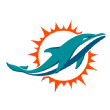
Miami Dolphins
Maximizing key investments: The Dolphins made the biggest splash in free agency in 2015, landing defensive tackle Ndamukong Suh with a record-setting six-year contract. He had dominant moments in 2015, but the team is paying top dollar for him to be one of the unstoppable forces in the NFL on a snap-to-snap basis. There's been talk about how he was utilized in 2015, but the bottom line is that Miami and Suh must find a way to maximize his output. The same goes for quarterback Ryan Tannehill, who the team proactively inked to a lucrative extension through 2020. He was solid at times in 2015, but new coach Adam Gase, who has a strong track record with quarterbacks, must find a way to elevate Tannehill's game. The Dolphins have hitched their wagon to these two players. Now it must pay off.

New England Patriots
Extensions, extensions, extensions: In last summer's piece, I highlighted the need for New England to take care of its young core players. That remains the case, as multiple defensive cogs -- including linebackers Dont'a Hightower and Jamie Collins, defensive ends Jabaal Sheard and Rob Ninkovich, and cornerback Logan Ryan -- enter the final year of their contracts. Super Bowl hero Malcolm Butler is set to be a restricted free agent after this season, as well, and he has developed into a player the team would like to keep around long term. Reinvesting in this core is the task at hand for New England.
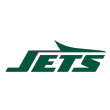
New York Jets
Develop a plan at QB: Let's not overthink this one. Ryan Fitzpatrick could still be re-signed (some NFL folks believe this is the likeliest outcome), which would likely give the Jets their answer for at least the 2016 season. But it's safe to assume the 33-year-old Fitzpatrick isn't the long-term answer, and the Jets have three other quarterbacks on the roster who are on their rookie deals and were fourth-round picks or higher. If the newest quarterback in town -- second-rounder Christian Hackenberg -- is the man of the future, the grooming process starts now.
AFC North

Baltimore Ravens
Setting the left-tackle plan in motion: The Ravens used the sixth overall pick in the draft on Ronnie Stanley, and he needs to assume the LT spot sooner rather than later. It may not be Week 1 of this season, however. Eugene Monroe, a declining player, remains on the books for three more seasons for a total of $20 million, but none of that is guaranteed. With quarterback Joe Flacco returning from the first major injury of his career (a torn ACL), Baltimore needs solid blindside protection. How quickly Stanley takes over that role is worth monitoring. Monroe may not be in Baltimore much longer.

Cincinnati Bengals
Finding spots for top 2015 picks: The Bengals used a first- and second-round pick on offensive linemen in 2015 despite a strong starting five, effectively allowing No. 21 overall pick Cedric Ogbuehi and No. 53 overall pick Jake Fisher to redshirt as rookies. At some point, however, the team needs to find a starting spot for each. Ogbuehi could be the heir apparent at left tackle, as Andrew Whitworth enters the final year of his contract. Fisher's versatility should be a plus, as he's getting work at all five spots this offseason.
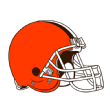
Cleveland Browns
Does a Thomas trade make sense? The Browns nearly shipped All-World left tackle Joe Thomas to Denver just prior to last year's deadline. Does it make sense to explore a trade of Thomas now? He has three years left on his contract and is due up to $29.5 million, an extremely reasonable price tag for a player of his caliber. If Cleveland parted ways with him now -- and the organization is clearly in the middle of a rebuild in which it values draft capital -- it could result in a significant return, with young players and/or draft picks. Keeping Thomas, however, means retaining an outstanding player and an integral part of the locker room from a leadership standpoint.

Pittsburgh Steelers
Big bucks for Bell? When healthy, Le'Veon Bell is the most complete back in the NFL. But as Bell enters the final year of his rookie contract, questions linger about the 24-year-old, who suffered a major knee injury in Week 8 last season. Will Pittsburgh choose to be patient about a new contract for Bell? He carries a cap charge of $1.3 million this season, meaning an extension would likely increase his cost against the cap for 2016. The Steelers have a tight cap situation; only three teams currently have less room with which to work. Waiting until after the 2016 season could lead to Bell being a candidate for a franchise tag.
AFC South
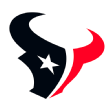
Houston Texans
Developing Clowney: This isn't so much a roster decision but an organizational goal: continuing to develop 2014 No. 1 overall pick Jadeveon Clowney. He has been banged up, missing 15 total games the last two seasons, and has just 4.5 sacks in his career. Clowney has shown an impressive ability to set the edge against the run, however, and there's no questioning his athletic upside. He's only 23 years old and has his first full, healthy offseason at his fingertips. Houston was sensational defensively down the stretch in 2016. If Clowney turns the corner, watch out.
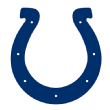
Indianapolis Colts
Break the bank for Luck: It's no mystery that the Colts have worked hard to lock up quarterback Andrew Luck, who enters the final year of his rookie deal. It's a matter of when, not if, a deal gets done. Perhaps more interesting, though, is how much money Luck will get. Don't be surprised if Luck's new deal arrives in record-setting form. He struggled in 2015, but there's no doubting his standing among the game's young quarterbacks. Many coaches and evaluators would choose him to build a franchise around.
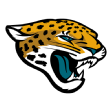
Jacksonville Jaguars
What's next for Joeckel? The Jags used the No. 2 overall pick in the 2013 draft on offensive tackle Luke Joeckel, but after signing Kelvin Beachum to a one-year contract with a four-year team option in free agency, it's fair to wonder if Joeckel's day as a blindside protector are over. If that's the case, where does he fit? The team declined his fifth-year option, making 2016 a prove-it year for the 24-year-old. If Beachum takes a firm grip on the left-tackle job, Joeckel could be looking at a position switch to try to find playing time. He's already working at guard during OTAs.
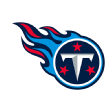
Tennessee Titans
Tackling the tackle question: Tennessee has used a first-round pick on an offensive tackle in two of the past three seasons, including the No. 8 pick in the 2016 draft on Michigan State's Jack Conklin. Early indications are that Conklin will transition to right tackle, allowing Taylor Lewan to stay at his natural spot on the left side. But if Conklin proves to be the superior left tackle, it's worth considering flip-flopping the duo. While the chasm in value between a left and right tackle is not as wide as it may have been a handful of years ago -- thanks in part to the growing number of gifted edge rushers -- it's critical for Tennessee to find the best player to handle blindside duties and protect its most important asset: quarterback Marcus Mariota.
AFC West
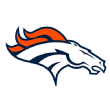
Denver Broncos
The Okung option: Looking past inking Von Miller to a long-term deal (my guess is this will get done) and developing young quarterback Paxton Lynch, the Broncos have a $19.5 million decision that must be made by the start of the 2017 league year. Left tackle Russell Okung signed a segmented five-year contract in free agency: It's a one-year pact with a four-year team option. The deal included absolutely zero money guaranteed up front, but if Denver opts to exercise the final four years, it includes $19.5 million guaranteed for the former first-round pick. If Okung plays the premium LT position at a high level, picking up the option is sensible. If he struggles or plays just satisfactorily, he could hit the open market for the second time in as many offseasons.
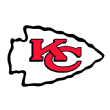
Kansas City Chiefs
Locking up defensive cornerstones: The Chiefs used the franchise tag on safety Eric Berry this offseason, leaving the team until July 15 to negotiate a long-term extension. There's extensive motivation to get the deal done: Berry is one of the best defensive backs in football. On top of that, extending Berry allows the team to turns its attention toward another difference-maker, defensive lineman Dontari Poe. Given Poe's rare ability to play an exceptional percentage of snaps and dramatically impact both the running and passing games, he is one of the top interior defensive linemen in football. He would be a franchise tag candidate absent a new deal before his current contract expires next offseason.
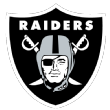
Oakland Raiders
Keeping an eye on future cash flow: There is so much to like about what Oakland is doing right now. The Raiders' 2014 draft class, which includes defensive end/outside linebacker Khalil Mack, quarterback Derek Carr and guard Gabe Jackson, has been remarkable. The team is rich with cap space and has an enviable young nucleus of talent. And the truth in the NFL is that it's never too soon to plan ahead. That doesn't mean Oakland must resist all temptation to make moves that help now but may be more difficult to sustain financially in future years, yet soon enough the team will have to pay up to retain the key members of the roster. Laying the foundation for that plan now is imperative.
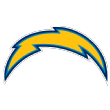
San Diego Chargers
Looking back at 2015 deals: In 2015, the Chargers doled out extensions to left tackle King Dunlap and cornerback Brandon Flowers, each for four more seasons. Dunlap missed nine games last season and Flowers missed five, and both will begin the 2016 season at the age of 30. Flowers has been an excellent player during healthy stretches of his career, while Dunlap plays a critical position for a team that had massive struggles on the offensive line last season. Neither player has guaranteed money beyond this season, which likely means 2016 is an evaluation year for each as it relates to their futures in San Diego.
NFC East
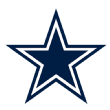
Dallas Cowboys
The quest for edge rushers: The Cowboys used a second-round pick on a defensive end in the 2014 and 2015 drafts, first on DeMarcus Lawrence and then Randy Gregory. Both are scheduled to serve four-game suspensions to begin the 2016 season. Each has natural talent -- Lawrence has been a quality contributor in two pro seasons -- and should continue to develop. Until they return, Dallas looks primed to rely on a rotation of veterans and youngsters, including fourth-round defensive end Charles Tapper.

New York Giants
Carrying Cruz beyond 2016: Wide receiver Victor Cruz has been one of the faces of the franchise since taking the league by storm as a second-year player in 2011. He was inked to a five-year extension in 2013, but the team reworked that deal this offseason as Cruz has been unable to play in 26 of the team's last 32 games. If Cruz performs well this season, he has a chance to make back a significant portion of the money he gave up (his base salary was dropped by almost $6 million for 2016). Whether that would be enough for New York to want to keep him around for the final two years of his deal -- he's scheduled to make $6.4 million in 2017 -- bears monitoring.
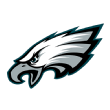
Philadelphia Eagles
Sorting the quarterback carousel: It's already been one of the most heavily discussed stories of the offseason: How will the Eagles handle their quarterback quandary? Sam Bradford is set to be the starter; if he plays well, does Philly really elect to move on from him via trade? (The answer is likely yes.) How much would a team be willing to send the Eagles in a trade if Bradford plays well, understanding he'd need a new contract because his deal runs only through the 2017 season? If he struggles, how quickly would No. 2 overall pick Carson Wentz assume a starting role?

Washington
Pay Cousins or need more proof? It's not a mystery that Washington wants to keep quarterback Kirk Cousins around for the long haul, and the quarterback feels the same way. He has already signed his franchise tender for 2016, which is just south of $20 million, and the question now may be this: If there is a gap between what Washington is offering in terms of guarantees or average annual value and what Cousins is seeking, will the team simply let Cousins play out the season? With just one full season as a starter, it's possible Washington wants to see more out of Cousins before paying him in the same tier financially as other young quarterbacks his age (which could be close to $20 million per season). Or does Washington opt to ensure a deal gets done now to put the contract issue to bed, even if the terms are a bit richer than the team is currently willing to pay?
NFC North

Chicago Bears
Will they commit to Cutler? After the way quarterback Jay Cutler played last season, this may come as a surprising question. He was solid (21 touchdown passes, 11 interceptions, 64.4 percent completion percentage), but he has had an up-and-down career. Part of the narrative with Cutler has been attached to his lucrative contract, though he has no guaranteed money past 2016. That allows Chicago year-to-year flexibility if the team chooses to move on from him, but with another dependable campaign in 2016, the questions that used to be so frequently asked surrounding Cutler might evaporate.
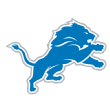
Detroit Lions
Zoning in on Reiff: The Lions used their first-round pick on offensive tackle Taylor Decker, who played left tackle at Ohio State. It appears the team is primed to use him on the right side of the line, with Riley Reiff entrenched at left tackle for 2016. But beyond this season, it's fair to wonder what role Reiff will have, as he's scheduled to be a free agent. Will Detroit look to recommit to the former first-round pick? And, if so, would the team keep Reiff as a blindside protector? Or might Detroit be more inclined to anchor Decker to his natural position and utilize Reiff elsewhere on the line (presumably at right tackle)?

Green Bay Packers
Pivotal year for Lacy: Running back Eddie Lacy has been a superstar at times in his career. He has a unique ability to be a part-time hammerhead with the light feet to be a part-time ankle breaker, too. He struggled significantly in 2015, however, and enters the final year of his rookie deal. If Lacy bounces back in 2016, he'll be among the most coveted running backs available in free agency next offseason. If he has another substandard season -- based on the bar he set in previous years -- the Packers could be on the hunt for a new back.

Minnesota Vikings
What next for Kalil? As a rookie, left tackle Matt Kalil lived up to the expectations that accompanied being a No. 4 overall draft pick. In the three seasons since, his play has been far less balanced. The Vikings picked up his 2016 option before last season, entitling him to a paycheck of $11.09 million for this season. Kalil plays an integral position and will be 27 at season's end. If he plays well, he could be in line for a big payday -- in Minnesota or elsewhere.
NFC South
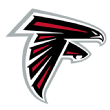
Atlanta Falcons
Keeping Schraeder around: Atlanta has worked hard in recent offseasons to stabilize the offensive line. That includes using the No. 6 overall pick in the 2014 draft on left tackle Jake Matthews, signing center Alex Mack to a massive deal this offseason, and trading for guard Andy Levitre (once a prized free agent) last offseason. Right tackle Ryan Schraeder's path to his starting gig was via the undrafted free-agent trail, but he has emerged as a steady contributor. Schraeder was issued a second-round tender as a restricted free agent this offseason, but a multiyear deal -- worth good money -- is an investment worth considering.
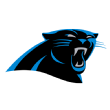
Carolina Panthers
The Norman trickle-down impact: Carolina rescinded the franchise tag from cornerback Josh Norman earlier this offseason, stunning many in the football world. The team was unable to reach a long-term deal with him and didn't believe one would be consummated, so Norman is now based in Washington, D.C. Beyond replacing Norman in the defensive backfield -- Carolina used second-, third- and fifth-round picks on cornerbacks -- the team's decision had a fiscal impact. The money not used on Norman will likely factor into extensions for other players on the roster, with defensive tackle Kawann Short and center Ryan Kalil among the notable players entering the final year of their deals.

New Orleans Saints
Cap sustainability: No team is more willing to push forward future cap charges in order to fit under the current cap than New Orleans, which has done so through several restructures of veterans on the roster (defensive end Cam Jordan, for instance, has had his deal tweaked twice since February). But New Orleans must eventually create a more efficient model of cap sustainability, and part of that will stem from the future of quarterback Drew Brees. He's scheduled to count $30 million against the cap in 2016, the final year of his deal. If no extension is reached before the start of next offseason, the possibility looms that Brees will hit the open market or get the franchise tag, which would have a whopping cap hit north of $43 million.
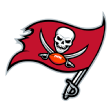
Tampa Bay Buccaneers
Jameis' jump? Tampa Bay's roster is in a healthy spot, contractually speaking -- many key pieces are either locked up long term or aren't yet eligible for extensions -- and the team worked hard to fill some pressing needs this offseason at pass-rusher and cornerback. Ultimately, the Bucs' rise in the NFC South will be dependent upon the development of quarterback Jameis Winston. The offseason between an NFL player's rookie and second seasons can often be his most impactful. Winston was really, really good by rookie quarterback standards in 2015; Tampa Bay is counting on another leap forward in 2016.
NFC West
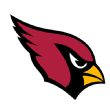
Arizona Cardinals
Pass-rusher's new deal: The Cardinals struck a blockbuster trade with the Patriots in acquiring defensive end/outside linebacker Chandler Jones to beef up a pass rush that lacked a proven young edge player. Jones enters the fifth year of his NFL career this season, which marks the conclusion of his rookie deal. This isn't news to Arizona, and while making the deal was the most important step, ensuring that Jones sticks around is pivotal, as well.

Los Angeles Rams
Filling the defensive holes: When the Rams moved up to the No. 1 overall pick in this year's draft, many remarked that the move made sense because of the Rams' strong running game and defense. While that sentiment isn't wrong, it's worth noting that the defense has some major holes to fill from a production and leadership standpoint: Cornerback Janoris Jenkins was a productive (albeit sometimes risk-taking) playmaker, linebacker James Laurinaitis played virtually every defensive snap and quarterbacked the defense, Rodney McLeod is an excellent free safety, and defensive end Chris Long was a pass-rusher and terrific leader. Accounting for those players is a task for L.A.

San Francisco 49ers
A plan at quarterback: There may not be a team in the NFL whose long-term plan at quarterback is less certain at this point, but that can quickly change. New coach Chip Kelly will have a chance to tutor Colin Kaepernick, Blaine Gabbert and sixth-rounder Jeff Driskel, but the team's best option at finding the right quarterback might be via a future draft. San Francisco's roster has a lot of work to do, and if 2016 is another struggle, the 49ers could find themselves near the top of the 2017 draft board with an opportunity to find a solution to the quarterback question.
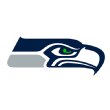
Seattle Seahawks
Offensive line shuffle: Seattle is unafraid to move pieces around on the offensive line -- former second-round pick Justin Britt is working some at center this offseason after starting his career at right tackle and then playing left guard, as an example -- but finding the right five is a challenge. The team has seen the entirety of its starting O-line from its recent Super Bowl-winning squad depart and could have a very different look along the offensive line than the group that concluded last season (two starters, left tackle Russell Okung and guard J.R. Sweezy, left as free agents). The team has immense trust in offensive line coach Tom Cable to develop the pieces in place to maximize the performance.
